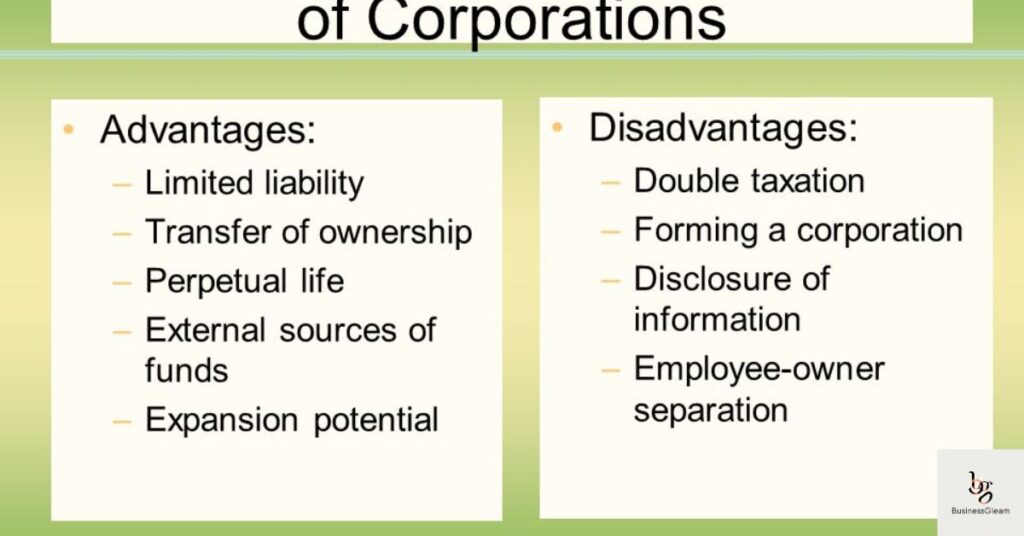This topic investigates the permissibility of landlords having two separate lease agreements for distinct sections of a single property, exploring legal boundaries and practical implications for rental management.
Unraveling the Legal and Strategic Implications for Landlords Managing Multiple Tenancies within a Single Property.
This exploration navigates the legal complexities and logistical challenges landlords face when considering multiple lease agreements on one property, shedding light on the intricacies of rental management optimization.
Exploring Two Leases on a Single Property
In the realm of property management, the concept of having two leases on a single property raises intriguing questions about feasibility and practicality. Landlords often contemplate this arrangement to maximize rental income by renting out different segments of their property to separate tenants. However, navigating the legal complexities and logistical challenges associated with dual leasing requires careful consideration. From ensuring compliance with local regulations to managing potential conflicts between tenants, landlords must weigh the benefits and drawbacks before embarking on this endeavor.
Exploring the dynamics of multiple leases on one property entails delving into various factors such as rental agreements, utility bill management, and tenant interactions. It is essential for landlords to establish clear boundaries, communicate effectively with tenants, and maintain transparency throughout the leasing process. By understanding the legal landscape and implementing effective management strategies, landlords can unlock the full potential of their property while providing quality housing options for tenants.
Read this: Who Pays Realtor Fees for Rentals in Texas? Rental Awareness
Understanding the Concept of a Second Lease
Understanding the concept of a second lease on a property is essential for landlords navigating the complexities of rental management. Essentially, a second lease involves renting out a distinct portion of a property to a separate tenant, in addition to an existing lease agreement.
This arrangement allows landlords to optimize their property’s earning potential by leveraging multiple rental streams. For instance, a landlord may lease out a main residence to one tenant while renting out a separate guesthouse or basement apartment to another.
However, implementing a second lease requires careful consideration of legal implications, including compliance with local regulations and potential conflicts between tenants. By understanding the nuances of second leases, landlords can make informed decisions to maximize profitability while ensuring a harmonious rental experience for all parties involved.
Legality and Considerations Across Different Jurisdictions

Navigating the legality and considerations of implementing multiple leases on a single property across different jurisdictions is a crucial aspect of rental management. The permissibility of this arrangement varies significantly depending on local laws and regulations.
For example, in some regions like England and Wales, landlords may enter into multiple leases without contravening any laws. However, in the United States, landlords must adhere to strict zoning ordinances and building codes when leasing out different parts of a property to tenants.
Understanding these legal nuances is paramount to ensure compliance and avoid potential legal disputes. Additionally, landlords must consider other factors such as tenant rights, property taxes, and insurance implications when exploring the feasibility of multiple leases. By staying informed about the legal landscape and seeking professional guidance, landlords can navigate these complexities effectively and make informed decisions regarding their rental properties.
Unique Factors in Managing Multiple Leases
Managing multiple leases on a single property presents unique challenges and considerations for landlords. Unlike traditional single-lease arrangements, landlords must navigate the complexities of overseeing multiple tenant relationships, rental agreements, and property maintenance responsibilities. One key factor is rent payment management, ensuring that tenants occupying different parts of the property pay their respective rents promptly and accurately.
Additionally, landlords must address utility bill distribution, deciding whether to split or combine bills for different leased areas. Moreover, maintaining clear communication channels between tenants and addressing any potential conflicts or disputes promptly is essential for fostering a harmonious living environment. Overall, effective management of multiple leases requires careful planning, diligent oversight, and proactive communication to ensure a seamless rental experience for all parties involved.
Metaphors in Shayari are like hidden treasures, waiting to be discovered. They transform ordinary words into powerful images, adding depth to the poetry. For instance, comparing a lover’s eyes to the vast ocean can evoke a sense of endless beauty and mystery. Symbolism is another powerful tool in Shayari. It allows poets to express complex ideas with just a few words. A rose might symbolize love, while a sunset could represent the fleeting nature of life. How does a simple metaphor or symbol change your perception of the world around you?
Evaluating the Advantages and Disadvantages

When evaluating the advantages and disadvantages of having two leases on one property, landlords must carefully weigh the potential benefits against the inherent challenges. On the positive side, multiple leases offer landlords the opportunity to diversify their rental income streams, thereby maximizing their property’s profitability.
By leasing out different segments of the property to separate tenants, landlords can potentially achieve higher overall rental yields compared to a single-lease arrangement. Furthermore, having multiple leases provides landlords with greater flexibility in tenant selection, allowing them to tailor rental agreements to meet the specific needs of different tenants. This can result in a more diverse and stable tenant base, reducing the risk of income loss due to vacancies.
However, it’s essential for landlords to consider the drawbacks associated with managing multiple leases on one property. One significant challenge is the increased complexity and administrative burden of overseeing multiple tenant relationships and rental agreements. Landlords must devote more time and resources to coordinating rent collection, property maintenance, and addressing tenant concerns, which can be demanding and time-consuming. Additionally, managing multiple leases may increase the likelihood of disputes or conflicts between tenants, requiring landlords to be proactive in resolving issues to maintain a harmonious living environment. Furthermore, landlords may incur additional costs associated with legal fees, property taxes, and insurance premiums when managing multiple leases, which can impact overall profitability.
Read also this: Do you need to tell your landlord if you are going to have a baby?
Advantages of Multiple Leases
The advantages of having multiple leases on a single property offer landlords various opportunities to enhance their rental income and property management strategies. Firstly, multiple leases enable landlords to diversify their rental income streams, reducing dependency on a single tenant and mitigating the risk of income loss in case of vacancies or rental defaults. This diversification can lead to a more stable and resilient income flow over time. Secondly, having multiple leases provides landlords with greater flexibility in tenant selection.
Landlords can tailor rental agreements to cater to different market segments or tenant preferences, allowing them to attract a broader range of tenants and maximize occupancy rates. Additionally, multiple leases offer landlords the opportunity to utilize underutilized spaces within the property, such as basements, garages, or separate units, thereby optimizing the property’s earning potential. Overall, the advantages of multiple leases include increased income diversification, tenant flexibility, and property utilization, making it an attractive option for landlords seeking to optimize their rental investments.
Increased Rental Income
Multiple leases on a single property can significantly boost rental income for landlords. By renting out distinct parts of the property to different tenants, landlords can maximize their earning potential.
This approach allows them to generate additional income streams beyond what a single lease would provide. For instance, landlords may lease out separate units, such as a main house and a guesthouse, or divide a property into multiple rental spaces, such as apartments or office suites. With each additional lease, landlords can increase their overall rental income, leading to higher profitability and return on investment for the property.
Diverse Tenant Selection
Multiple leases on a single property offer landlords the advantage of diverse tenant selection. With the ability to lease out different segments of the property to separate tenants, landlords have greater flexibility in attracting a diverse range of renters. This allows them to tailor rental agreements to cater to various market segments or tenant preferences.
Whether targeting residential, commercial, or mixed-use tenants, landlords can customize lease terms to meet the specific needs of different tenant demographics. This diversity in tenant selection not only expands the potential tenant pool but also enhances the property’s overall market appeal and occupancy rates.
Enhanced Landlord Flexibility
Multiple leases on a single property provide landlords with enhanced flexibility in managing their rental properties. By leasing out different segments of the property to separate tenants, landlords gain greater control over lease terms and rental agreements.
This flexibility allows landlords to tailor leases to meet the specific needs and preferences of individual tenants, such as setting different rental rates, lease durations, or occupancy terms. Additionally, landlords can adjust lease terms more easily to adapt to changing market conditions or tenant demands. Overall, enhanced flexibility enables landlords to optimize rental income, minimize vacancies, and effectively manage their properties to maximize profitability.
Challenges of Managing Multiple Leases

Managing multiple leases on a single property presents several challenges for landlords to navigate effectively. One significant challenge is the increased administrative burden associated with overseeing multiple tenant relationships and rental agreements. Landlords must devote more time and resources to coordinating rent collection, property maintenance, and addressing tenant concerns, which can be demanding and time-consuming.
Additionally, managing multiple leases may heighten the likelihood of disputes or conflicts between tenants, requiring landlords to be proactive in resolving issues to maintain a harmonious living environment. Furthermore, landlords may incur additional costs associated with legal fees, property taxes, and insurance premiums when managing multiple leases, which can impact overall profitability and require careful financial planning and management strategies.
Increased Management Costs and Time Commitment
Managing multiple leases on a single property often entails increased management costs and time commitment for landlords. With multiple tenants occupying different segments of the property, landlords must allocate more resources to coordinate rent collection, property maintenance, and tenant communication.
The addressing the needs and concerns of multiple tenants requires greater time and attention, leading to a heightened management workload. As a result, landlords may find themselves facing higher administrative expenses and dedicating more time to overseeing the property, impacting overall profitability and necessitating efficient management strategies to mitigate these challenges.
Complexity in Financial Transactions
The complexity of financial transactions is a notable challenge when managing multiple leases on one property. Landlords must navigate intricate financial arrangements, such as allocating rental income and expenses across different leases. This involves accurately tracking payments from multiple tenants, managing diverse payment schedules, and ensuring proper accounting practices.
Additionally, handling financial transactions for multiple leases may require specialized knowledge and expertise, particularly in areas such as tax implications, expense allocation, and financial reporting. Overall, the complexity of financial transactions adds an additional layer of challenge to managing multiple leases, necessitating careful attention to detail and robust financial management practices.
Understanding Legal Frameworks
Understanding legal frameworks is paramount when considering multiple leases on a single property. Landlords must navigate a complex web of legal regulations and obligations to ensure compliance and avoid potential legal disputes.
This includes understanding local housing laws, zoning regulations, tenant rights, and landlord-tenant statutes that govern rental agreements. Additionally, landlords must be aware of specific legal requirements regarding lease agreements, property maintenance standards, and eviction procedures. Failing to adhere to these legal frameworks can result in costly legal consequences, including fines, lawsuits, or even the loss of rental income. Therefore, a comprehensive understanding of legal requirements and diligent adherence to legal obligations are essential for landlords managing multiple leases effectively and mitigating legal risks.
Legal Considerations and Exceptions
Legal considerations and exceptions play a pivotal role in determining the feasibility of multiple leases on a single property. Landlords must carefully assess the legal landscape and understand any exceptions or nuances that may apply to their specific situation.
This includes conducting thorough research into local housing laws, zoning ordinances, and landlord-tenant regulations to ensure compliance. Additionally, landlords should be aware of any legal exceptions or exemptions that may permit or restrict multiple leasing arrangements. For example, some jurisdictions may have specific regulations governing multi-unit properties or mixed-use developments. By understanding these legal considerations and exceptions, landlords can make informed decisions about leasing strategies and mitigate the risk of legal challenges or disputes down the line.
Frequently asked questions
Can you rent two apartments at the same time in California?
Yes, it is possible to rent two apartments at the same time in California. However, whether a landlord will allow it depends on their individual policies and the terms of the lease agreements. Tenants should review the lease agreements carefully and discuss their intentions with the landlords to ensure compliance with any restrictions or requirements.
Can you have two leases at once in Texas?
Yes, it is possible to have two leases at once in Texas. Like in California, whether a landlord will allow it depends on their policies and the terms of the lease agreements. Tenants should review the lease agreements thoroughly and communicate with the landlords to clarify any questions or concerns regarding multiple leasing arrangements.
Can you be on 2 leases at once in Virginia?
Yes, it is possible to be on two leases at once in Virginia. Similar to California and Texas, whether a landlord will allow it depends on their policies and the terms of the lease agreements. Tenants should carefully review the lease agreements and discuss their intentions with the landlords to ensure compliance with any relevant regulations or requirements.
While mainstream Nigerian music, like Afrobeats, often focuses on global themes and commercial success, NAA songs prioritize cultural authenticity. Mainstream artists may use English or a mix of languages, while NAA artists often stick to their native tongues. This distinction highlights the persistence of tradition in a rapidly modernizing world.
Can you be on two leases in Florida?
Yes, it is possible to be on two leases in Florida. As with the other states mentioned, whether a landlord will permit it depends on their individual policies and the terms of the lease agreements. Tenants should thoroughly review the lease agreements and communicate openly with the landlords to address any questions or concerns about multiple leasing arrangements.
Final thought
In conclusion, the concept of having multiple leases on a single property poses both opportunities and challenges for landlords. While it offers the potential for increased rental income, diverse tenant selection, and enhanced flexibility in property management, it also comes with complexities such as increased management costs, legal considerations, and potential disputes. Landlords must carefully evaluate the feasibility and implications of multiple leasing arrangements, taking into account legal regulations, financial considerations, and tenant dynamics. By understanding the legal frameworks, addressing potential challenges proactively, and implementing effective management strategies, landlords can navigate the complexities of multiple leases effectively and maximize the potential of their rental properties.
Ultimately, successful management of multiple leases requires a comprehensive approach that balances the benefits and drawbacks while prioritizing compliance, communication, and tenant satisfaction. By staying informed about legal requirements, maintaining transparent communication with tenants, and implementing robust management practices, landlords can unlock the full potential of their properties and ensure a positive rental experience for all parties involved. With careful planning, diligent oversight, and proactive problem-solving, landlords can leverage multiple leasing arrangements to optimize rental income, minimize risks, and achieve long-term success in the competitive rental market.
Hey, Molar is the voice behind this all-encompassing blog, sharing expert insights and practical advice on business, real estate, and more. Dedicated to helping you navigate the complexities of these fields, Kelly provides the latest trends, in-depth analyses, and creative strategies to elevate your ventures.